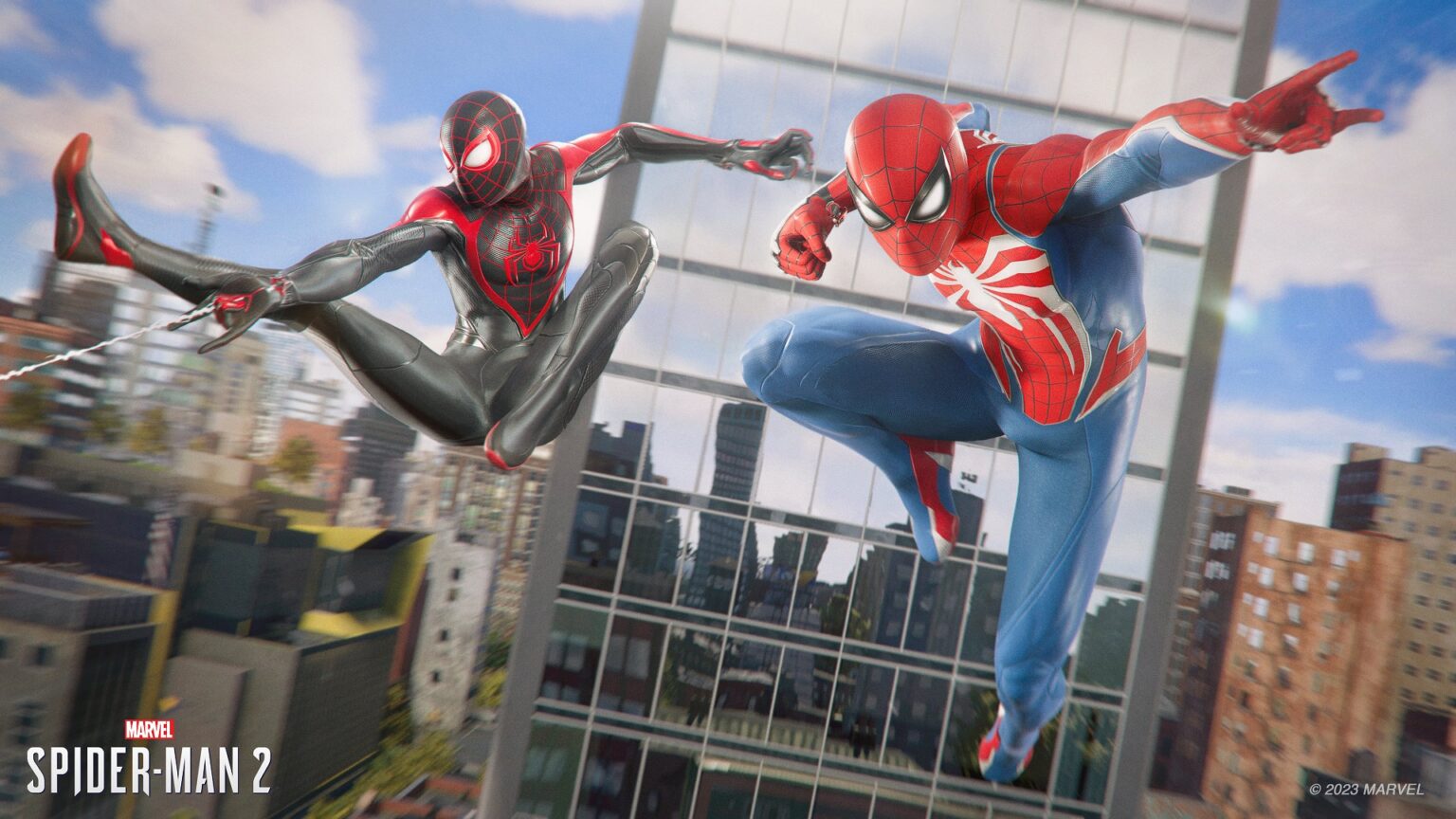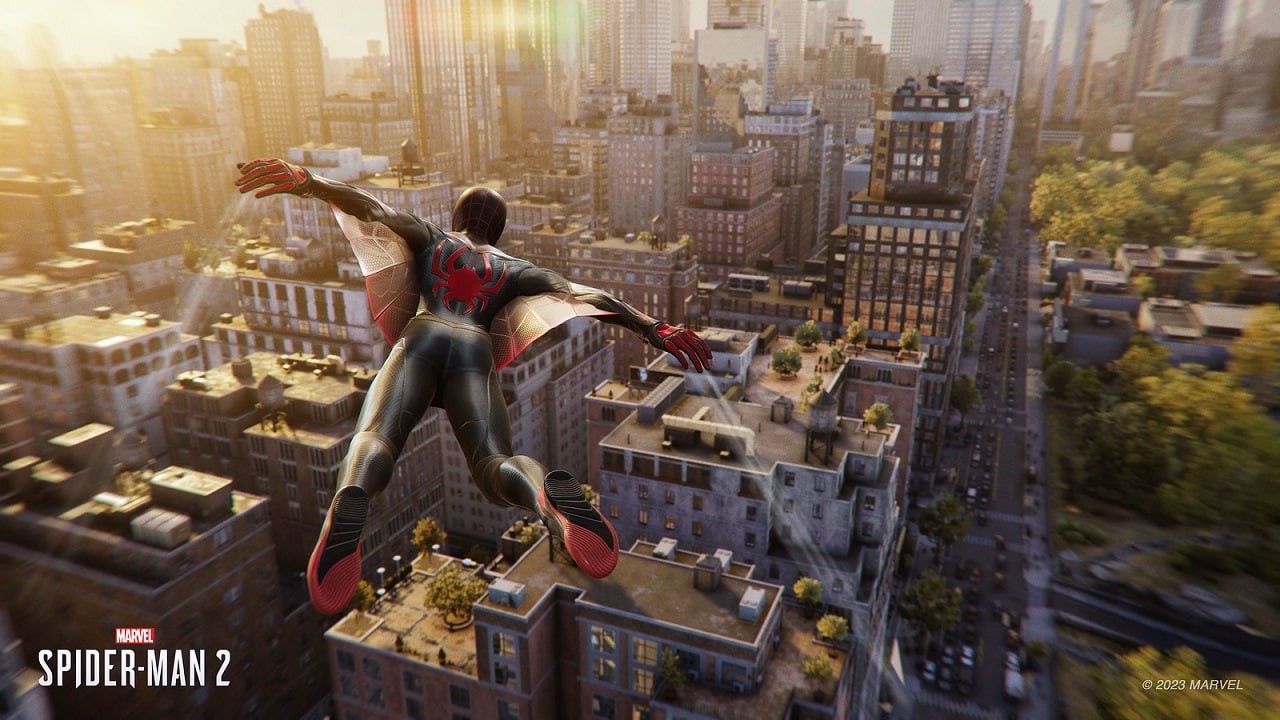The State of Play on September 14th might have been underwhelming, but we did receive much-needed information about Marvel’s Spider-Man 2’s open-world design. The first gameplay demo focused on a cinematic story mission, omitting information about the open world. In a previous article, I expressed disappointment because it merely confirmed our expectations instead of showcasing innovations.
However, the State of Play presentation delved into new territory, addressing many of my questions regarding the free-roam aspect of the game. Marvel’s Spider-Man on the PlayStation 4 was a great game, but its side content quickly became repetitive. It followed the classic open-world design with icons on a map and monotonous tasks. Given I had confidence that the sequel would excel in the story and moment-to-moment gameplay, I was eager to see if the open world would transcend conventional design or, at the very least, perfect it.
One of the first revelations in the presentation was the size of the open world. After the first showcase, I was somewhat disappointed that the sequel would reuse the same map as the original, changing nothing apart from the visuals, performance, and a few specific buildings. However, the map is expected to be twice the size of the original, incorporating Brooklyn and Queens. These new additions include Peter’s hometown and Miles’ place of education. Since traversal is so enjoyable, having more locations to explore and a significantly larger map will be a welcome addition.
Speaking of traversal, one of the most significant takeaways from the trailer was fast travel speed. Insomniac Games showcased its expertise in utilizing the PlayStation 5’s SSD to provide nearly instantaneous transitions between dimensions in Ratchet and Clank: Rift Apart. It appears Insomniac Games is applying similar methods to eliminate load times in Spider-Man. In the trailer, it took approximately 7 seconds to teleport across the map. Moreover, the transition seamlessly leads to swinging, eliminating interruptions in the action. In a game centered on movement, reducing pauses is crucial and a substantial improvement over the loading times in the PlayStation 4 game.
Ironically, I rarely used fast travel in the first game because web-swinging was so enjoyable; it was arguably the best part of the game. However, fast travel is required in the sequel when you switch between the two main characters, Miles and Peter. This instant character switch is possible during open-world exploration, much like Grand Theft Auto 5, but without the excessive loading times. This detail clarifies how Insomniac Games is innovating on the first game. For instance, you might switch from Miles to Peter amid an activity. In one scene, we observed the transition from Miles to Peter, with Peter performing crunches on the side of a building. There are genuinely two Spider-Man characters, not only in the storyline but also in real-time gameplay.
I’ve covered the topics of map size, fast travel, and multiple protagonists, but what about the actual open-world activities? I remain uncertain about how these will unfold, but the latest trailer provided some insights. The most exciting detail was the side quests centered around specific Spider-Man villains. Incorporating iconic villains into side quests will undoubtedly make them engaging to play. The most memorable side content in the later Batman Arkham games involved taking down a particular villain. These missions felt less like side content and more like mini-campaigns or storylines. For example, in Spider-Man, you could take a break from the main quest to confront the villainy of Mysterio. This approach is far more appealing than searching for pigeons scattered across the city, particularly when these missions culminate in epic showdowns against famous Spider-Man villains.
Regarding the discovery of side content, it appears they won’t simply be marked as icons on the map anymore. Instead, you will stumble upon them randomly as you explore the world. You might be gliding over rooftops and spot a mysterious green symbol in the air or see Kraven’s robotic vultures soaring above. This exploration-focused discovery can enhance the open-world gaming experience, transforming it from a mere checklist into a more immersive, lived-in world. At the same time, there will likely be options for those who enjoy checking off boxes. Once you discover a side activity, it will remain marked on your map. Additionally, you may receive calls or texts on your in-game phone that initiate side missions. Overall, this blend of exploration and checklist-based gameplay should represent a significant improvement over the first game.
With these additional details on how the open world functions, I’m much more enthusiastic about Marvel’s Spider-Man 2. It may not be as open as The Legend of Zelda: Tears of the Kingdom, but it also won’t suffer from the tedious checklists found in Assassin’s Creed. Striking a balance between the two extremes is where I prefer to be – not too overwhelmed, yet not too bored. Hopefully, Marvel’s Spider-Man 2 will find that balance and emerge as one of the best open-world superhero games.
Stay tuned at Gaming Instincts via Twitter, YouTube, Instagram, and Facebook for more gaming news.
No related posts.







